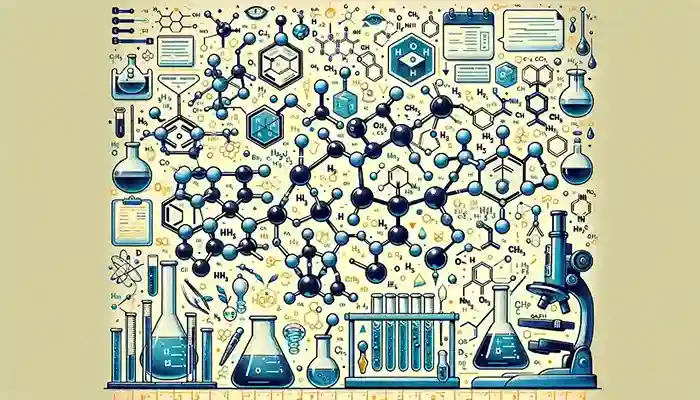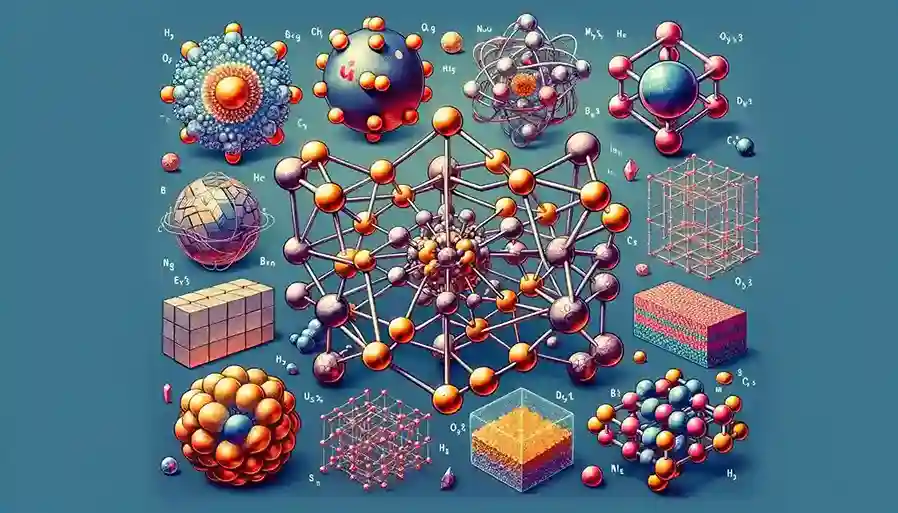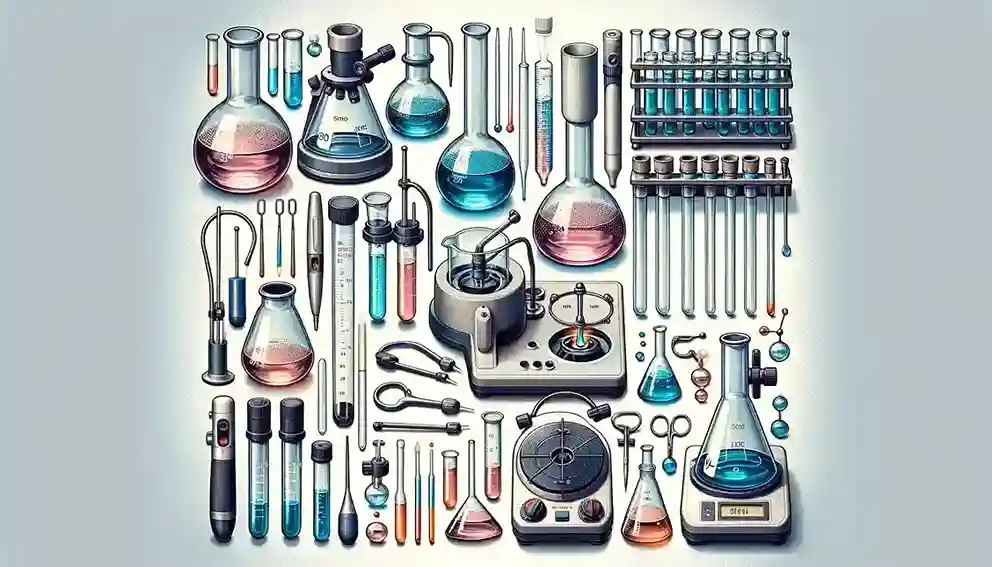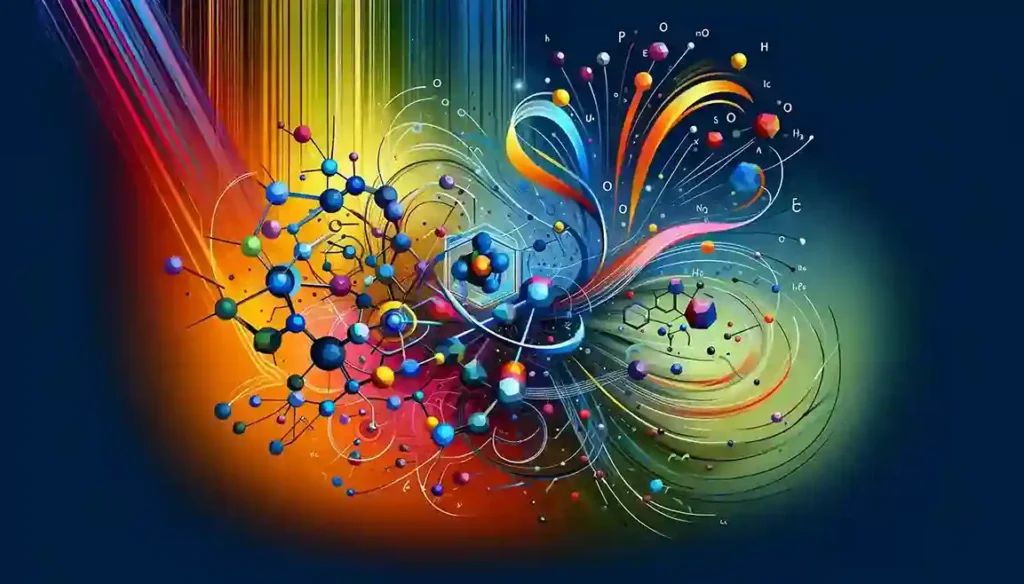NEET Chemistry Syllabus 2024 (updated as per recent change)
NEET Syllabus 2024 Overview
The NEET syllabus comprises of majorly three main subjects: Physics, Biology, and Chemistry. The NEET 2024 exam pattern will remain almost the same as the previous year, the NEET 2023. However, recently, there has been an update in the syllabus.
NEET 2024 Overview
| NEET 2024 Exam Overview | |
|---|---|
| Particulars | Details |
| Exam Name | National Eligibility Cum Entrance Test (NEET) |
| Conducting Body | National Testing Agency (NTA) |
| Exam Level | Undergraduate (UG) Exam at National Level |
| Exam Frequency | Once a year |
| Total Registrations | 20,87,000 (NEET 2023) |
| Exam Mode | Offline or Paper Pencil Based Test |
| Courses Offered Through NEET UG | MBBS, BDS, BSc Nursing, BAMS, BVSC & AH |
| Exam Fees | INR 1,700 (General), 1,600 (OBC), 1,000 (Reserved category candidates), 9,500 (Foreign nationals) |
| Exam Duration and Timing | 3 hours and 20 minutes |
| 2 PM to 5.20 PM (IST) | |
| Number of Subjects and Total Marks | Physics (180 marks), Chemistry (180 marks), Biology (360 marks): Total Marks – 720 |
| Total Questions | 200 (180 to be attempted) |
| Marking Scheme | +4 for each correct answer |
| -1 for each incorrect answer | |
| Number of Exam Cities | 485 (India) |
| Language/Medium of Paper | 13 Languages – English, Hindi, Bengali, Urdu, Assamese, Gujarati, Marathi, Odia, Kannada, Tamil, Malayalam, Punjabi and Telugu |
| Accepting Colleges | 1,613 colleges |
| Total Number of Seats | MBBS – 1,08,890 BDS – 27,868 BAMS – 52,720 BVSc & AH – 603 |
| NEET Helpline Numbers | 011-40759000 |
| NEET Official Website | www.neet.nta.nic.in |
Reduced or Not?
Yes, there has been a reduction in the NEET syllabus 2024. Rumors were going around among the students, all started by a PDF on social media. After a few days, NMC released a notice that put these rumors to rest. This notice confirmed the changes in the syllabus and answered the doubts of the aspirants.
According to the PDF available online, the NMC has implemented certain changes to the NEET Syllabus for 2024. You can find the comprehensive NMC-approved NEET 2024 Syllabus PDF in this post. To stay updated on upcoming changes to the NEET Syllabus for 2024, candidates should bookmark this page or follow the official NMC website.
List of Deleted Topics from NEET UG Chemistry Syllabus 2024
Below is the list of topics that have been REMOVED from the NEET UG Biology Syllabus 2024. Candidates can also access the NEET Syllabus 2024 PDF for reference.
Excluded Topics:
The following topics have been removed from the NEET UG 2024 Chemistry syllabus:
| Updated NEET Chemistry Syllabus 2024 Deleted Topics | |
| Deleted from Class 11 Syllabus | Deleted from Class 12 Syllabus |
| States of Matter (Physical Chemistry) | Solid State (Physical Chemistry) |
| Hydrogen (Inorganic Chemistry) | Surface Chemistry (Physical Chemistry) |
| S-block (Inorganic Chemistry) | Metallurgy (Inorganic Chemistry) |
| Environmental Chemistry (Organic Chemistry) | Polymer Chemistry in Everyday Life (Organic Chemistry) |
Note: The P-block chapter has not been removed from the NEET UG Chemistry 2024 syllabus but is not in the revised NCERT Chemistry textbook. Students are advised to study the P-block from the old NCERT books.
Read More: NEET syllabus 2024: Biology

Added topics in NEET Chemistry Syllabus 2024 vs NCERT Chemistry 2024
The following topics have been added to the NEET UG 2024 Chemistry syllabus:
P-Block Elements: This specific topic, although removed from the Chemistry syllabus of NCERT, has been included in the NEET UG 2024 syllabus.
Experimental-based Chemistry: Additionally, the revised syllabus introduces experimental-based topics in Chemistry, including the detection of functional groups like hydroxyl and carbonyl, along with inorganic compounds such as Mohr’s salt and potash alum.
NEET Chemistry Syllabus 2024 : An Overview
The syllabus for chemistry has been given below divided into physical, organic, and inorganic chemistry. These topics form the basis for medicine and must thus be studied thoroughly to clear NEET.
| Physical chemistry | Inorganic Chemistry | Organic Chemistry |
| UNIT I: SOME BASIC CONCEPTS IN CHEMISTRY | UNIT 9: CLASSIFICATION OF ELEMENTS AND PERIODICITY IN PROPERTIES | UNIT 13: PURIFICATION AND CHARACTERISATION OF ORGANIC COMPOUNDS |
| UNIT 2: ATOMIC STRUCTURE | UNIT IO: P- BLOCK ELEMENTS | UNIT I4:SOME BASIC PRINCIPLES OF ORGANIC CHEMISTRY |
| UNIT 3: CHEMICAL BONDINC AND MOLECULAR STRUCTURE | UNIT ll: D – and F- BLOCK ELEMENTS | UNITS 15: HYDROCARBONS |
| UNIT 4: CHEMICAL THERMODYNAMICS | UNIT l2: CO-ORDINATION COMPOUNDS | UNIT l6: ORGANIC COMPOUNDS CONTAINING HALOGENS |
| UNIT 5: SOLUTIONS | UNIT 17: ORGANIC COMPOUNDS CONTAINING OXYGEN | |
| UNIT 6: EQUILIBRIUM | UNIT I8: ORGANIC COMPOUNDS CONTAINING NITROGEN | |
| UNIT 7: CHEMICAL BONDING AND MOLECULAR STRUCTURE | UNIT 19: BIOMOLECULES | |
| UNIT 8: CHEMICAL KINETICS | UNIT 20: PRINCIPLES RELATED TO PRACTICAL, CHEMISTRY |
NEET Syllabus 2024 Classwise Chemistry Detailed
This has been copied directly from the PDF for the syllabus that NTA has released, I have also attached the PDF below for reference.

PHYSICAL CHEMISTRY
UNIT I: SOME BASIC CONCEPTS IN CHEMISTRY
Matter and its nature, Dalton’s atomic theory: Concept of atom, molecule, element, and compound; Laws of chemical combination; Atomic and molecular masses, mole concept, molar mass, percentage composition, empirical and molecular formulae; Chemical equations and stoichiometry.
UNIT 2: ATOMIC STRUCTURE
Nature of electromagnetic radiation, photoelectric effect; Spectrum of the hydrogen atom. Bohr model of a hydrogen atom – its postulates, derivation of the relations for the energy of the electron and radii of the different orbits, limitations of Bohr’s model; Dual nature of matter, de Broglie’s relationship, Heisenberg uncertainty principle. Elementary ideas of quantum mechanics, quantum mechanics, the quantum mechanical model of the atom, and its important features. Concept of atomic orbitals as one-electron wave functions: Variation of Ψ and Ψ^2 with r for 1s and 2s orbitals; various quantum numbers (principal, angular momentum, and magnetic quantum numbers) and their significance; shapes of s, p, and d – orbitals, electron spin and spin quantum number; Rules for filling electrons in orbitals – Aufbau principle, Pauli’s exclusion principle and Hund’s rule, electronic configuration of elements, extra stability of half-filled and completely filled orbitals.
UNIT 3: CHEMICAL BONDING AND MOLECULAR STRUCTURE
Kossel-Lewis approach to chemical bond formation, the concept of ionic and covalent bonds.
Ionic Bonding: Formation of ionic bonds, factors affecting the formation of ionic bonds; calculation of lattice enthalpy.
Covalent Bonding: the concept of electronegativity, Fajan’s rule, dipole moment; Valence Shell Electron Pair Repulsion (VSEPR) theory and shapes of simple molecules.
Quantum mechanical approach to covalent bonding: Valence bond theory – its important features, the concept of hybridization involving s, p, and d orbitals; Resonance.
Molecular orbital Theory – Its important features, LCAOs, types of molecular orbitals (bonding, antibonding), sigma and pi-bonds, molecular orbital electronic configurations of homonuclear diatomic molecules, the concept of bond order, bond length, and bond energy. Elementary idea of metallic bonding. Hydrogen bonding and its applications.
UNIT 4: CHEMICAL THERMODYNAMICS
Fundamentals of thermodynamics: System and surroundings, extensive and intensive properties, state functions, types of processes.
The first law of thermodynamics – concept of work, heat internal energy and enthalpy, heat capacity, molar heat capacity; Hess’s law of constant heat summation; Enthalpies of bond dissociation, combustion, formation, atomization, sublimation, phase transition, hydration, ionization, and solution.
The second law of thermodynamics – Spontaneity of processes: ΔS of the universe and ΔG of the system as criteria for spontaneity, ΔG° (Standard Gibbs energy change) and equilibrium constant.
UNIT 5: SOLUTIONS
Different methods for expressing the concentration of solution – molarity, molality, mole fraction, percentage (by volume and mass both), the vapor pressure of solutions and Raoult’s law – Ideal and non-ideal solutions, vapor pressure – composition plots for ideal and non-ideal solutions; colligative properties of dilute solutions – relative lowering of vapor pressure, depression of freezing point, the elevation of boiling point, and osmotic pressure; Determination of molecular mass using colligative properties; Abnormal molar mass, van ‘t Hoff factor, and its significance.
UNIT 6: EQUILIBRIUM
Meaning of equilibrium, and the concept of dynamic equilibrium. Equilibria involving physical processes: Solid-liquid, liquid – gas and solid-gas equilibria, Henry’s law. General characteristics of equilibria involving chemical processes: Law of chemical equilibrium, equilibrium constants (Kp and Kc) and their significance, the significance of ΔG and ΔG° in chemical equilibria, factors affecting equilibrium concentration, pressure, temperature, catalyst; Le Chatelier’s principle. Ionic equilibrium: weak and strong electrolytes, ionization of electrolytes, various concepts of acids and bases (including Arrhenius, Bronsted – Lowry, and Lewis) and their ionization, multistage ionization of acids and bases, ionization of water, pH scale, common ion effect, hydrolysis of salts, pH of salt solutions, solubility and solubility product, buffer solutions.
UNIT 7: REDOX REACTIONS AND ELECTROCHEMISTRY
Electronic concepts of oxidation and reduction, redox reactions, oxidation number, rules for assigning oxidation number, and balancing of redox reactions. Electrolytic and metallic conduction, conductance in electrolytic solutions, molar conductivities, and their variation with concentration: Kohlrausch’s Law and its applications. Electrochemical cells – Electrolytic and Galvanic cells, different types of electrodes, standard electrode potentials, electrode potential, and its measurement; cell reactions, emf of a Galvanic cell and measurement, Nernst equation and its applications, relationship between cell potential and Gibbs’ energy change; dry cell, lead accumulator; Fuel cells.
UNIT 8: CHEMICAL KINETICS
Rate of a chemical reaction, factors affecting the rate of reactions: concentration, temperature, and pressure, catalyst; elementary and complex reactions, rate law, and molecularity of reactions. Rate constant and its units, Arrhenius equation and its forms for zero and first-order reactions. Their characteristics and half-lives, the effect of temperature on the rate of reactions. Arrhenius theory, activation energy, and its calculation, collision theory of bimolecular gaseous reactions (no derivation).
INORGANIC CHEMISTRY

UNIT 9: CLASSIFICATION OF ELEMENTS AND PERIODICITY IN PROPERTIES
Modern periodic law and present form of the periodic table. s, p, d, and f block elements – periodic trends in properties of elements atomic and ionic radii, ionization enthalpy, electron gain enthalpy, valence, oxidation states, and chemical reactivity.
UNIT 10: P- BLOCK ELEMENTS
Group -13 to Group 18 Elements
General Introduction: Electronic configuration and general trends in physical and chemical properties of elements across the periods and down the groups; unique behavior of the first element in each group.
UNIT 11: d – and f- BLOCK ELEMENTS
Transition Elements
General introduction, electronic configuration, occurrence, and characteristics, general trends in properties of the first-row transition elements – physical properties, ionization enthalpy, oxidation states, atomic radii, colour, catalytic behaviour, magnetic properties, complex formation, interstitial compounds, alloy formation; Preparation, properties, and uses of K2Cr2O7 and KMnO4.
Inner Transition Elements
Lanthanoids – Electronic configuration, oxidation states, and lanthanoid contraction. Actinoids – Electronic configuration and oxidation states.
UNIT 12: CO-ORDINATION COMPOUNDS
Introduction to coordination compounds. Werner’s theory; ligands, coordination number, denticity, chelation; IUPAC nomenclature of mononuclear coordination compounds; isomerism; Bonding-Valence bond approach and basic ideas of Crystal field theory, color, and magnetic properties; Importance of coordination compounds (in qualitative analysis, extraction of metals, and in biological systems).
ORGANIC CHEMISTRY
UNIT 13: PURIFICATION AND CHARACTERISATION OF ORGANIC COMPOUNDS
Purification – Crystallization, sublimation, distillation, differential extraction, and chromatography – principles and their applications.
Qualitative analysis – Detection of nitrogen, sulphur, phosphorus, and halogens. Quantitative analysis (basic principles only) – Estimation of carbon, hydrogen, nitrogen, halogens, sulphur, and phosphorus.
Calculations of empirical formulae and molecular formulae: Numerical problems in organic quantitative analysis.
UNIT 14: SOME BASIC PRINCIPLES OF ORGANIC CHEMISTRY
Tetravalency of carbon: Shapes of simple molecules – hybridization (s and p); classification of organic compounds based on functional groups: and those containing halogen, oxygen, nitrogen, and sulphur; Homologous series: Isomerism – structural and stereoisomerism. ‘
Nomenclature (Trivial and IUPAC) Covalent bond fission – Homolytic and heterolytic: free radicals, carbocations, and carbanions; stability of carbocations and free radicals, electrophiles, and nucleophiles.
Electronic displacement in a covalent bond – Inductive effect, electromeric effect, resonance, and hyperconjugation.
Common types of organic reactions: substitution, addition, elimination, and rearrangement.
UNIT 15: HYDROCARBONS
Classification, isomerism, IUPAC nomenclature, general methods of preparation, properties, and reactions.
Alkanes – Conformations: Sawhorse and Newman projections (of ethane): Mechanism of halogenation of alkanes.
Alkenes – Geometrical isomerism: Mechanism of electrophilic addition: addition of hydrogen, halogens, water, hydrogen halides (Markownikoff’s and peroxide effect), hydroboration, polymerization. Polymerization.
Alkynes – Acidic character: Addition of hydrogen, halogens, water, and hydrogen halides: electrophilic and nucleophilic addition.
Aromatic hydrocarbons – Nomenclature, benzene – structure and aromaticity: Mechanism of electrophilic substitution: halogenation, nitration.
Friedel-Craft’s alkylation and acylation, directive influence of the functional group in mono-substituted benzene.
UNIT 16: ORGANIC COMPOUNDS CONTAINING HALOGENS
General methods of preparation, properties, and reactions; Nature of C-X bond: Mechanisms of substitution reactions.
Uses; Environmental effects of chloroform, iodoform, freons, and DDT.
UNIT 17: ORGANIC COMPOUNDS CONTAINING OXYGEN
General methods of preparation, properties, reactions, and uses. ALCOHOLS, PHENOLS, and ETHERS
Alcohols: Identification of primary, secondary, and tertiary alcohols: mechanism of dehydration.
Phenols: Acidic nature, electrophilic substitution reactions: halogenation, nitration, and sulphonation. Reimer – Tiemann reaction.
Ethers: Structure.
Aldehyde and Ketones: Nature of carbonyl group; Nucleophilic addition to >C=O group; relative reactivities of aldehydes and ketones; Important reactions such as – Nucleophilic addition reactions (addition of HCN, NH3, and its derivatives), Grignard reagent; oxidation: reduction (Wolff Kishner and Clemmensen); the acidity of α-hydrogen, aldol condensation, Cannizzaro reaction, Haloform reaction, Chemical tests to distinguish between aldehydes and Ketones.
Carboxylic Acids: Acidic strength and factors affecting it.
UNIT 18: ORGANIC COMPOUNDS CONTAINING NITROGEN
General methods of preparation. Properties, reactions, and uses.
Amines: Nomenclature, classification, structure, basic character, and identification of primary, secondary, and tertiary amines and their basic character.
Diazonium Salts: Importance in synthetic organic chemistry.

UNIT 19: BIOMOLECULES
General introduction and importance of biomolecules.
CARBOHYDRATES – classification; aldoses and ketoses; monosaccharides (glucose and fructose) and constituent monosaccharides of oligosaccharides (sucrose, lactose, and maltose).
PROTEINS. Elementary Idea of amino acids, peptide bonds, polypeptides. Proteins: primary, secondary, tertiary, and quaternary structure (qualitative idea only), denaturation of proteins; enzymes.
VITAMINS – Classification and functions.
NUCLEIC ACIDS – Chemical constitution of DNA and RNA.
Biological functions of nucleic acids.
Hormones (General introduction).
UNIT 20: PRINCIPLES RELATED TO PRACTICAL CHEMISTRY
Detection of extra elements (Nitrogen, sulfur, halogens) in organic compounds; Detection of the following functional groups: hydroxyl (alcoholic and phenolic), carbonyl (aldehyde and ketones), carboxyl, and amino groups in organic compounds.
The chemistry involved in the preparation of the following:
Inorganic compounds: Mohr’s salt, potash alum.
Organic compounds: Acetanilide, p-nitro acetanilide, aniline yellow, iodoform.
The chemistry involved in the titrimetric exercises – Acids, bases, and the use of indicators, oxalic acid vs KMnO4, Mohr’s salt vs KMnO4. Chemical principles involved in the qualitative salt analysis: cations – Pb2+, Cu2+, Al3+, Fe3+, Zn2+, Ni2+, Co2+, Ba2+, Mg2+, NH4+. Anions – CO32-, S2-, SO42-, NO3-, NO2-, Cl-, Br-, I- (Insoluble salts excluded).
Chemical principles involved in the following experiments:
1. Enthalpy of solution of CuSO4.
2. Enthalpy of neutralization of strong acid and strong base.
3. Preparation of lyophilic and lyophobic sols.
4. Kinetic study of the reaction of iodide ions with hydrogen peroxide at room temperature.
How to go about it
I want you guys to do one thing today. I hope you all have brought your NCERTS, if not, buy them today. Just go through the book, open the syllabus, and start marking. Put a tick next to the sections that are included in the syllabus and a cross next to the ones that have been deleted. Write down the names of the topics that have been included in the syllabus but are not given in the NCERT. Write these down in your Textbook index, so that you do not forget to incorporate them into your preparation.
This is the first step and now, your preparation begins.
Head over to the weightage blog to know the next step.






